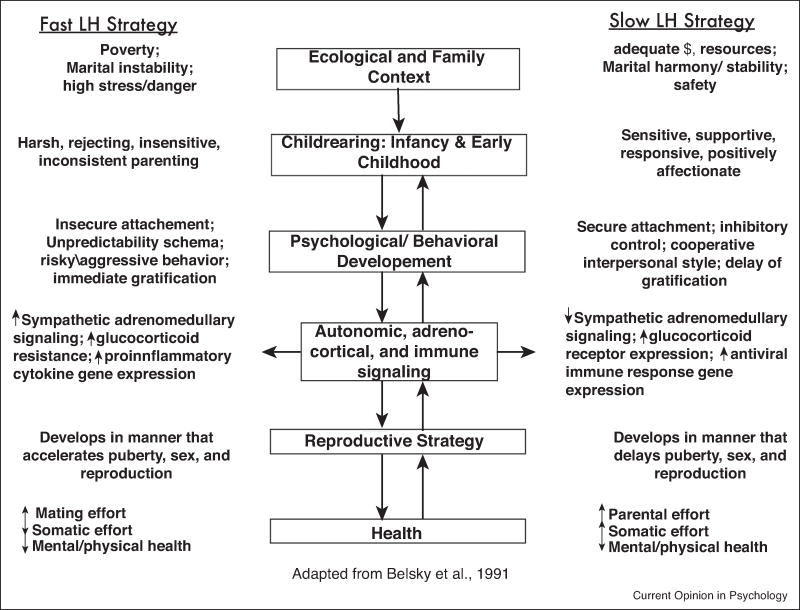Figure 1.
A modified figure of the Psychosocial Acceleration Theory, originally proposed by Belsky et al. [2] and extended in subsequent work. The figure posits that early childhood experiences (first 5–7 years old) will orient a child’s development in a manner that is creates a cohesive life history strategy. Life history strategies reside on a fast-slow continuum whereby individuals oriented toward a faster life history strategy will emphasize reproduction over health-maintenance and high-quality parenting; conversely, individuals oriented toward a slower life history strategy will emphasize investment in health-maintenance and high-quality parenting. Although Psychosocial Acceleration Theory emphasizes environmental causation, the bidirectional arrows highlight the importance of child effects and bidirectional causation more generally. The horizontal arrows indicate that autonomic, adrenocortical, and immune signaling also operate as important moderators of the proposed pathways.

